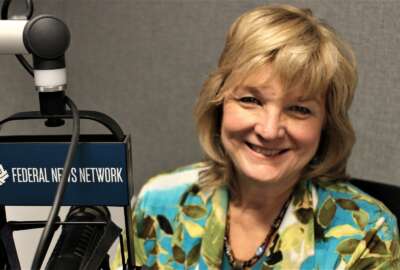

When it comes time to start withdrawing money from your TSP will you be glad you invested pre-tax, or wish somebody had talked to you about the Roth option?
When it comes time to start withdrawing money from your Thrift Savings Plan account will you be glad you invested pre-tax, or will you wish somebody had talked to you about the Roth option?
Under it, you invest after-tax money but when it comes time to collect it’s all yours. No matter how much you have in the account the IRS won’t get any of it.
A growing number of federal/postal/military personnel are opting into the Roth option. Many are younger, just starting out, and many are in a lower tax bracket. And while they could use the extra take-income now, they know about the magic of long-term investing, compounding and having a tax-free bundle when they retire and start tapping their TSP account.
Last week’s Your Turn radio show featured benefits expert Tammy Flanagan. She’s a long-time fed now “retired” to Florida where she runs a business advising workers and retirees how to get the most out their careers. Last week’s show focused on the best dates to retire (and why), and how to design your own buyout. That show, like all Your Turn broadcasts, is archived, as well as the accompanying column.
Tammy answered many questions on the show but one came in too late to answer on air. A listener said that all of her money is now in the traditional tax-deferred TSP but she asked if she should switch to the Roth TSP. This should help a lot of people who are sitting on the investment, and it’s an example of the work that Tammy does — for a fee, not for free — every day:
In order to decide whether to make Roth contributions to your TSP for the remainder of your federal service, there are some things to consider:
If you want to make contributions, you must submit a contribution election to tell your agency what portion of your pay you want to contribute and how you want to designate them between traditional and Roth. You cannot convert any portion of your existing traditional TSP balance to a Roth balance.
You can make both traditional and Roth contributions if you want. You can contribute in any percentages or amounts you choose, subject to IRC limits, and change your election at any time.
If you are Federal Employees Retirement System or CSRS, your agency/service matching contributions are based on the total amount of money (traditional and Roth) that you contribute each pay period. All agency/service contributions are deposited into your traditional balance.
Roth TSP is similar to a Roth 401(k), not a Roth IRA. There are no income limits for Roth TSP contributions. In order to make tax-free withdrawals from the Roth TSP, you have to wait five years from your first contribution.
When you withdraw your money, you will not have to pay taxes on any Roth contributions because taxes have already been paid. The earnings on Roth contributions are qualified (i.e., paid tax-free) when withdrawn if five years have passed since Jan. 1 of the calendar year in which the deceased participant first made a TSP Roth contribution.
If your Roth earnings are not qualified, you can continue to defer taxes on them by transferring your payment to a Roth IRA or Roth account maintained by an eligible employer plan.
Shifting your contributions from pre-tax to post-tax means you will be paying more income tax while you are employed. If you contribute the maximum, $19,000 + $6,000 (maximum TSP contribution for 2019) lowers your taxable income by $25,000 for 2019.
These are the marginal tax brackets for this year:
| Rate | For unmarried individuals, taxable income over | For married individuals filing joint returns, taxable income over | For heads of households, taxable income over |
| 10% | $0 | $0 | $0 |
| 12% | $9,700 | $19,400 | $13,850 |
| 22% | $39,475 | $78,950 | $52,850 |
| 24% | $84,200 | $168,400 | $84,200 |
| 32% | $160,725 | $321,450 | $160,700 |
| 35% | $204,100 | $408,200 | $204,100 |
| 37% | $510,300 | $612,350 | $510,300 |
| Table 1. Tax Brackets and Rates, 2019 | |||
If that portion of your income is taxed at the 22% bracket, the tax savings on $25,000 is $5,500 per year or $458 per month. This is how much more you will pay in income tax on the federal level at that tax bracket, plus the amount you will also pay on the state level — an important consideration especially if you are at this income bracket or higher.
By Amelia Brust
In 2015 a Niger remake of the Prince film “Purple Rain” was made featuring members of a nomadic group of people known as the Tuareg. The film is called “Akounak Tedalat Taha Tazoughai,” which translates to “Rain the Color of Blue with a Little Red in It,” because there’s no word for “purple” in Tamajeq, the language spoken by the Tuareg.
Source: NPR
Copyright © 2024 Federal News Network. All rights reserved. This website is not intended for users located within the European Economic Area.
Mike Causey is senior correspondent for Federal News Network and writes his daily Federal Report column on federal employees’ pay, benefits and retirement.
Follow @mcauseyWFED

